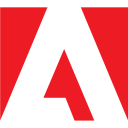This is the first time ever that Adobe has been named a Leader in DAM — by either Gartner or Forrester. We also accelerated from a contender to a leadership position faster than any of our competitors.
All brands are now media organizations, based on the amount of content they create, the audiences they deliver it to, and the stories they tell to connect with customers. The increase in content continues, as 86% of brand marketers continue to invest in content development. Not only that, but buyers increasingly prefer rich media content like images and video to get their information — infographics and videos ranked among the top five types of content that B2B buyers like to consume.
Brands need digital asset management because it:
— Helps companies scale content creation. Most in-house creative teams are small; 54% of those teams have between one and 10 people. So being able to scale content with limited resources is key. DAM vendors have responded with more focus on templatized assets and additional support for content localization.
— Enables content reuse. With content centralized, more stakeholders
— both inside and outside of creative teams — can use content. A global retailer told us that content reuse and efficiency is an “eight out of 10 in terms of pain” and that the CMO has recognized it as a problem. Vendors have responded with tighter integrations between DAM and creative tool sets like Adobe Creative Cloud and Microsoft Office that let users surface DAM content from inside those creative tools.
— Supports development of content for omnichannel delivery. Endpoints have proliferated in both number and diversity. Gen Y members
— the highly coveted demographic of US online adults aged 29 to 37
— use more than four connected devices on average. And it’s more than just websites now: Those channels have grown or will grow to include wearables, augmented reality, voice assistants, and connected cars. Vendors have responded with technologies like autocrop to area of interest on images and productized connectors into web content management (WCM) systems.
Adobe excels in AI metadata but lacks commerce functionality relative to others. San Jose, California-based Adobe has one of the broadest portfolios in this evaluation; buyers already in the Adobe ecosystem can reap additional value with the DAM solution. Adobe excels in offering trainable AI to surface business-specific metadata, which means, for example, that if you’re a car maker, the AI could tell you the specific model rather than that it’s a “vehicle.” Adobe has mastered support for video and emerging content, like posing a 3D element in a scene. And it has improved its performance, but still suffers in search — according to reference customers — and lacks a strong story around commerce. Adobe’s strong vision includes an understanding that next-gen content demands atomization — what Adobe calls experience fragments — to power reuse across the omnichannel experience. Over the past year, it has begun to capitalize on its name recognition in the space and now sells its solution as a standalone DAM product. The company is among the most mentioned in deals because of its strong product ecosystem. It has a superior partner ecosystem with a mix of global DAM system integrators (SIs) and regional agencies. It can improve its execution plan by better communicating its planned enhancements. Adobe is a good fit for enterprises that already use complementary products from the Adobe ecosystem, have a strong need for video and emerging content capabilities, and are willing to pay a premium price for superior functionality.

































































